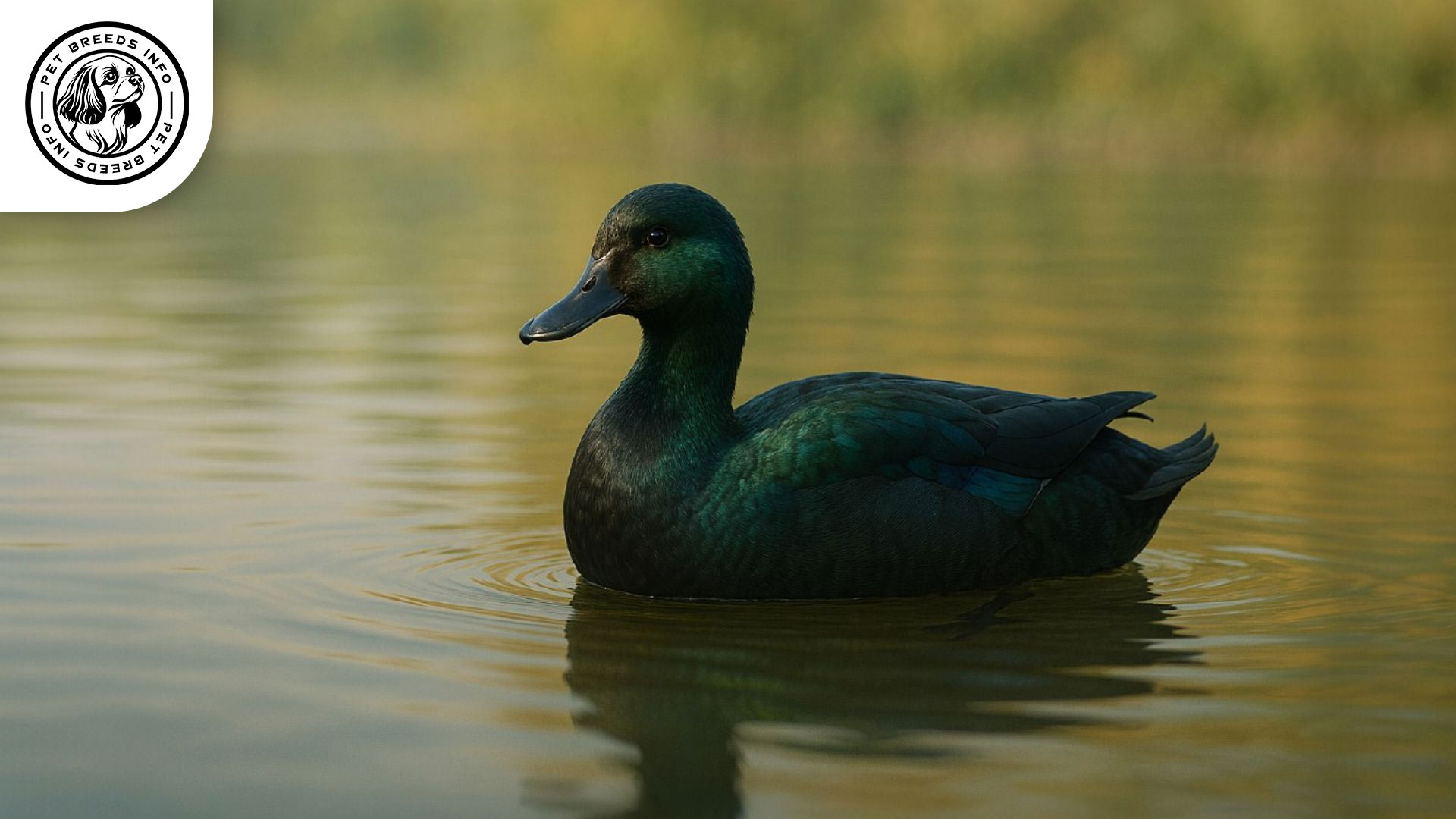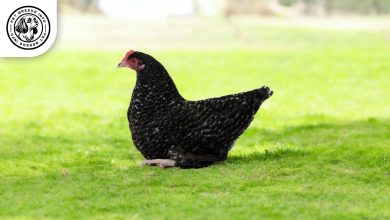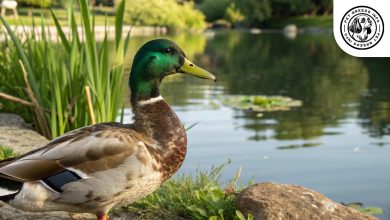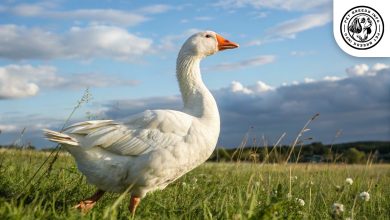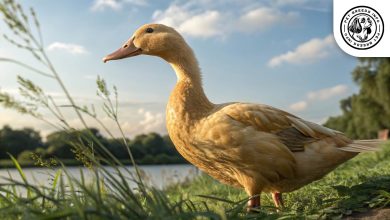Black East Indian Duck Breed: Personality, Lifespan & Care
General Introduction of the Breed
The Black East Indian Duck is a small, ornamental duck breed primarily known for its iridescent black-green plumage. It is sometimes simply referred to as the East Indie Duck.
This breed originated in the United States during the early 19th century, with historical records suggesting it was selectively bred for its striking black coloration. Though its exact ancestral lineage is unclear, it is believed to trace back to smaller domesticated duck breeds and may have some genetic ties to the Mallard.
Table of Contents
| Common Name | Black East Indian Duck |
| Scientific Name | Anas platyrhynchos domesticus |
| Origin | United States |
| Size | Small (bantam-sized) |
| Lifespan | 6–10 years |
| Colors | Iridescent black with green sheen |
| Talking Ability | None |
| Noise Level | Low to moderate |
| Social Behavior | Reserved but friendly with proper handling |
Physical Characteristics
The Black East Indian Duck is a bantam breed, meaning it is smaller compared to many other duck breeds. It typically weighs between 1 to 2 pounds, making it one of the lightest domestic duck breeds.
Its coat is black with a greenish iridescence that appears more prominent under sunlight.
The eyes of the Black East Indian Duck are dark brown to black, complementing its overall dark aesthetic.
Its small head features a moderately short bill that is usually dark gray to black in color.
The tail is compact and slightly upright, blending seamlessly with its streamlined body shape.
As they age, some ducks may develop white feathers, although their black coloration remains dominant.
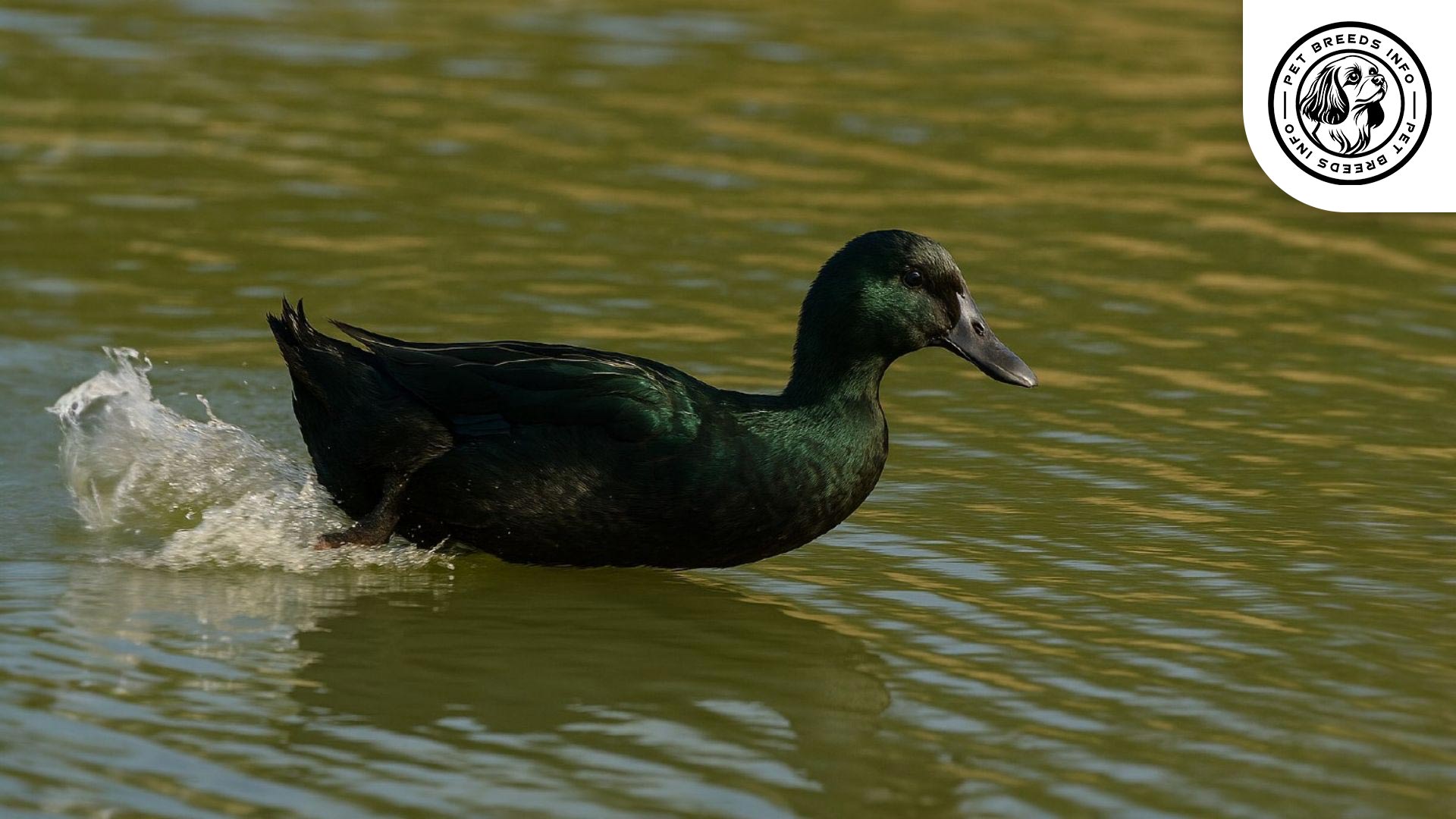
Personality and Temperament
The Black East Indian Duck is known for being intelligent and moderately independent. While it is not as social as some other duck breeds, it can become quite friendly with regular handling.
It has a moderate energy level and enjoys foraging when given the opportunity.
This breed does well with other ducks and poultry but tends to be more reserved around humans if not socialized early.
While playful, it has strong natural instincts for avoiding predators and can be quick to respond to perceived threats.
The Black East Indian Duck is generally adaptable but may be sensitive to sudden environmental changes or disturbances.
Care and Maintenance Requirements
This breed benefits from access to outdoor space and shallow water for swimming and foraging.
Although it can live in a backyard or small farm setup, it thrives best with a secure, predator-proof area.
The Black East Indian Duck has relatively low grooming needs, requiring only occasional feather checks and cleanliness maintenance.
It is hardy in colder climates but may require additional warmth in extreme cold.
Basic hygiene practices include keeping their water and food areas clean, trimming nails as needed, and ensuring regular health checks.
Diet and Nutrition
The best diet for this breed includes high-quality waterfowl pellets, supplemented with grains, vegetables, and invertebrates.
They may require additional calcium sources, such as crushed oyster shells, to maintain strong eggshells if kept for egg-laying.
Avoid feeding processed foods, salty snacks, and avocados, as these can be toxic to ducks.
Read More: Yellow-faced Parrotlet Bird
Portion sizes should be managed to prevent overfeeding, particularly since bantam ducks can easily gain excess weight.
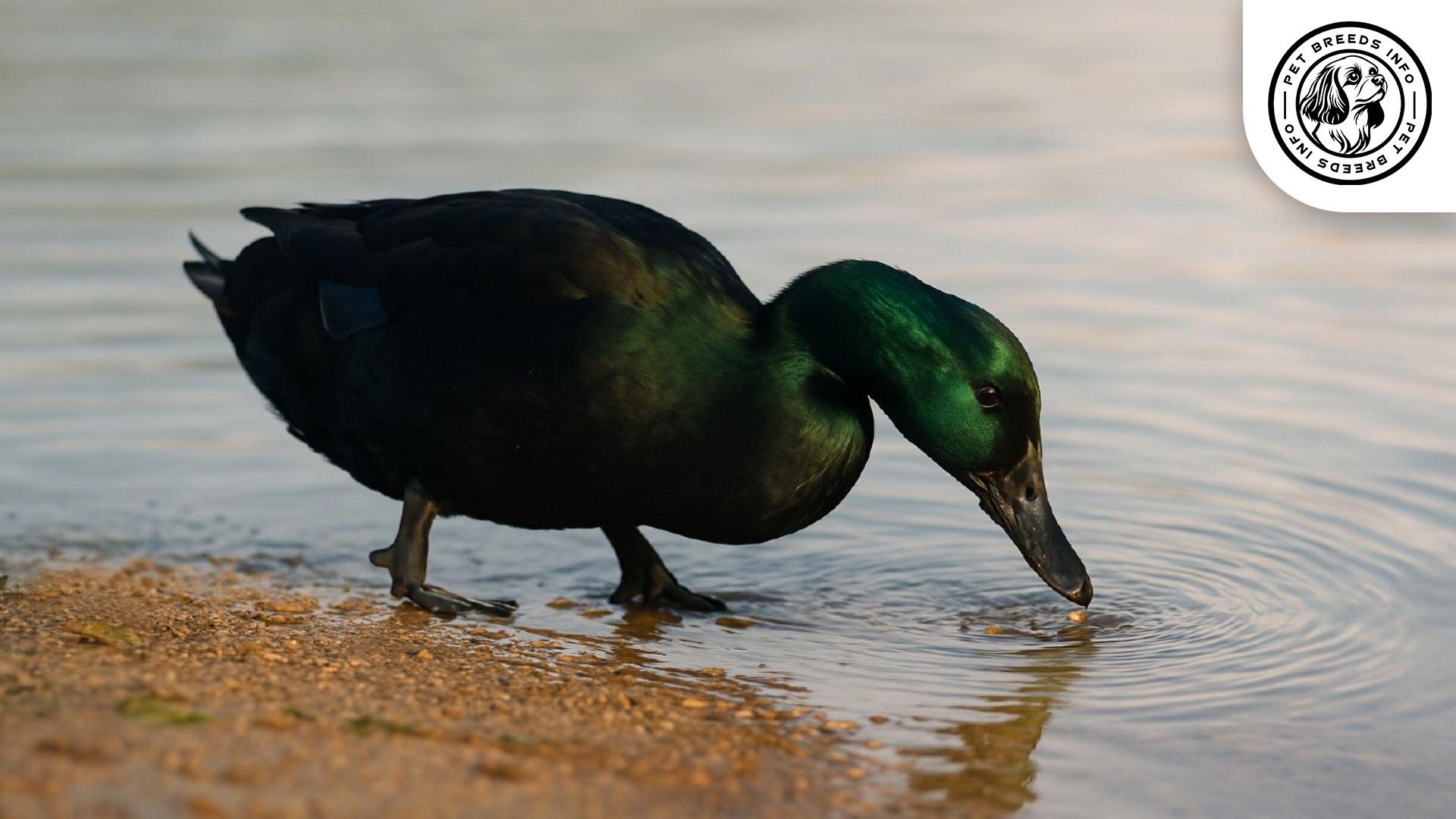
Health and Common Medical Issues
The Black East Indian Duck is a generally healthy and hardy breed, with an average lifespan of 6 to 10 years.
Potential health concerns include mites, respiratory infections, and bumblefoot due to rough surfaces or poor sanitation.
Routine vet checkups, vaccinations, and parasite prevention are recommended for optimal health.
Training and Behavior Management
While not as easy to train as some domestic pets, Black East Indian Ducks can learn simple behaviors through positive reinforcement.
Early handling helps them become less skittish and more accustomed to human interaction.
Read More: Black-capped Lory Bird
They benefit from a calm, consistent training approach and should not be exposed to frequent loud noises or stressful environments.
Interaction with Other Animals and Humans
Black East Indian Ducks can coexist well with other ducks and poultry but may not be as interactive as some larger duck breeds.
They are generally suitable for families but require gentle handling, making them better suited to homes with older children who understand how to manage small waterfowl.
Due to their small size, they can be vulnerable to larger pets and predators, requiring a secure enclosure.
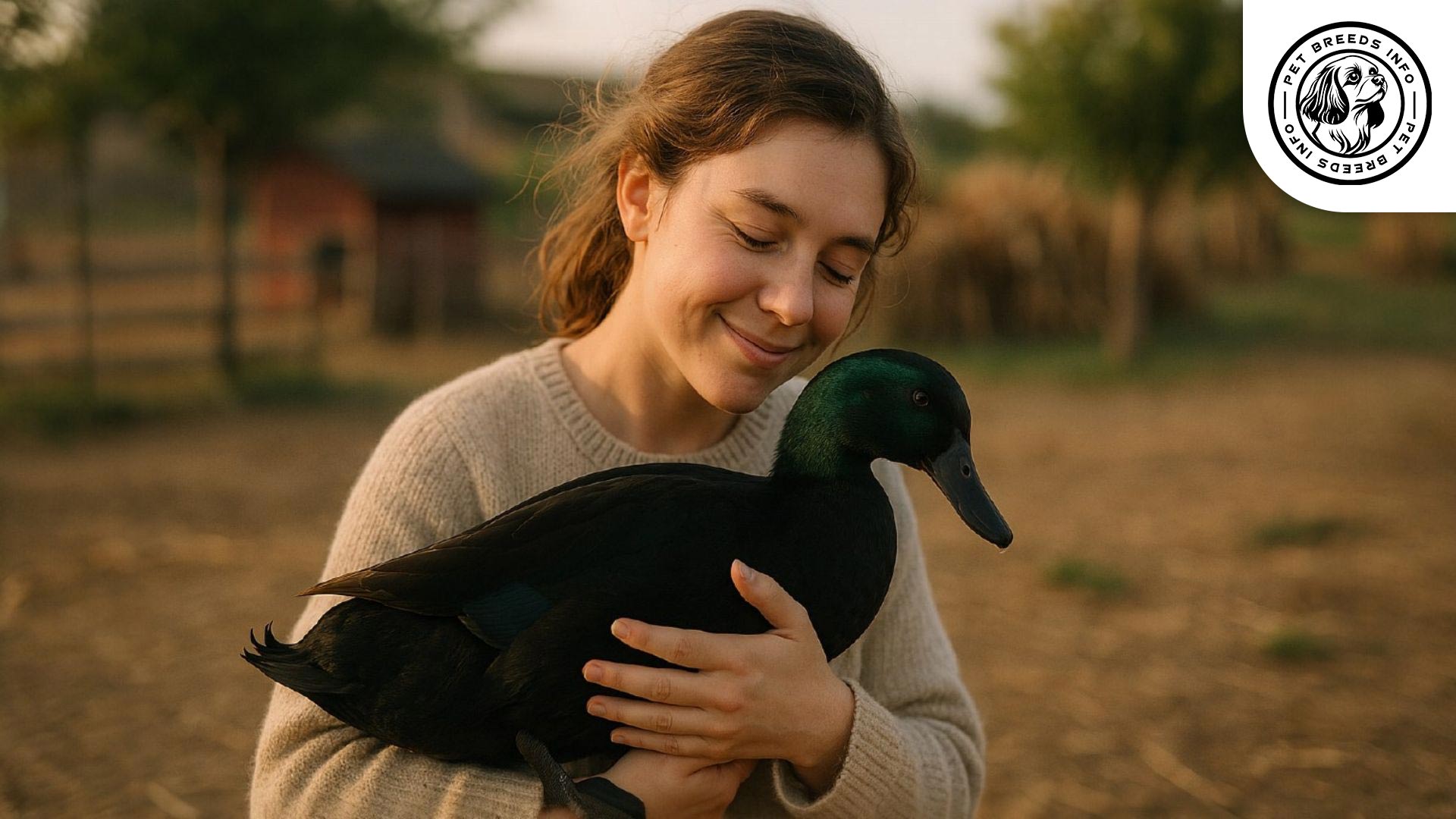
Price and Availability
The cost of a Black East Indian Duck ranges from $10 to $50, depending on availability, age, and breeder reputation.
Prospective buyers should look for ducks from reputable breeders or farms that specialize in ornamental waterfowl.
It is important to consider the long-term care requirements before adopting this breed, as they need consistent food, water, and shelter.
Conclusion and Final Thoughts
The Black East Indian Duck is an excellent choice for hobbyists looking for a small, visually striking ornamental duck.
Read More: Pekin Duck
It is best suited for owners who can provide secure outdoor space and are willing to accommodate the breed’s modest social behavior.
Before choosing this breed, potential owners should be aware of their long lifespan, dietary needs, and housing requirements.
Overall, this bantam duck is an attractive, low-maintenance addition to a backyard flock or pond setting.
FAQ
Is the Black East Indian Duck suitable for small backyards?
Yes, their small size and low maintenance make them ideal for backyard flocks if a secure space is provided.
Are Black East Indian Ducks good pets for children?
They are best for older children who understand how to gently handle small birds.
What do they eat?
They thrive on waterfowl pellets, grains, vegetables, and invertebrates, with added calcium for egg-layers.
Do Black East Indian Ducks get along with other ducks?
Yes, they are generally compatible with other ducks and poultry.
